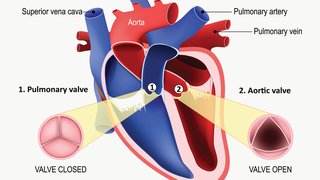
Unless you've been stranded on an island for the last 40 years, you probably know that having high cholesterol is bad for you. But the tricky part is figuring out who really needs medication to treat it, which one you should use, and what dosage is appropriate. Unfortunately, clarity is not yet at hand.
In November 2013, the long-awaited Guidelines for Treatment of Blood Cholesterol were released by a joint task force of the American College of Cardiology and the American Heart Association. The latest guidelines contained big changes from the prior recommendations – developed 12 years ago – which has led to both enthusiasm and controversy within the cardiology community.
Simplicity Itself – Identifying Four Groups for Treatment
In some ways, the new guidelines are much simpler than the old ones. Rather than a complex algorithm for determining who needs treatment, the new guidelines contain just four groups of individuals for whom cholesterol treatment with statin drugs is recommended:
So far, so good. But one particular area of controversy that has arisen is not who should be treated, but instead, what is the specific goal of the treatment?
- People with known atherosclerotic cardiovascular disease such as heart attack, stroke, etc.
- Individuals with very high cholesterol levels – LDL cholesterol greater than 190mg/dL
- People with diabetes between the ages of 40 and 75
- Those whose risk of developing heart disease or stroke over the next 10 years is greater than 7.5 percent. (Calculate your risk.)
Focus on the Evidence
The biggest departure from the prior guidelines is recommending statin therapy without any mention of cholesterol targets. In other words, what cholesterol number are we trying to achieve? Physicians and patients alike are used to aiming for a certain number. The new idea of using statins to lower risk without having a specific number in mind has been unsettling.
But the truth is that randomized control clinical trials have never actually been done to evaluate the concept of aiming for a specific number. As a result, authors of these latest guidelines instead recommend determining statin treatment levels based on the patient’s grouping in the four categories listed above, along with a broad goal of the strength of statin medication. For example, a recommendation for a patient in the first group shown above would be a high-potency statin – rather than shooting for an LDL level below 70mg/dL. Because specific targets are not backed by science, this new approach is commendable, but it leaves many questions.
Risk Conversations – Is This the Right Choice for Me?
Apart from the controversies of the new guidelines, a discussion of the potential risks of statins should be part of the mix in any conversation with your doctor. Many of the more common side effects are well known, such as muscle aches and abnormalities in liver function tests. However, a new side effect is now coming to light – an increase in blood sugar in certain groups.
This slight increase in blood sugar "causes" diabetes in one in every 1,000 people taking moderately potent statins (for example, atorvastatin 10mg or simvastatin 40mg), and one in 300 people taking high potency statins (for example, atorvastatin 80mg or crestor 20mg).
In patients at higher risk of heart disease, including those whose risk is greater than 7.5 percent, the benefits of statins far outweigh these risks. However, in others whose risks are more modest, or where side effects are problematic, a risk conversation with one’s health care provider is recommended.
Not the Last Word
While the new guidelines represent a big change in the way we think about cholesterol management, they serve as a reset button rather than a last word. Science, consensus, and experience will help us fill in the gaps as patients and doctors become acquainted with the new guidelines. Most importantly, the spirit and substance of the new guidelines is aimed at decreasing heart attacks and strokes.
Who can argue with that?











